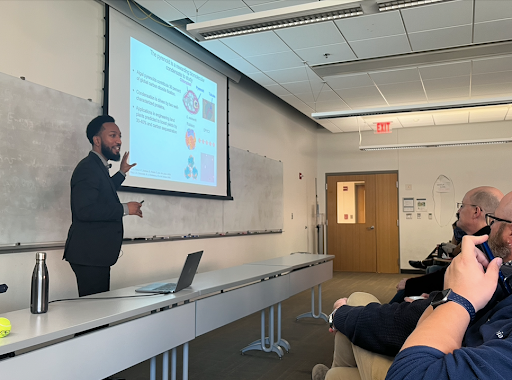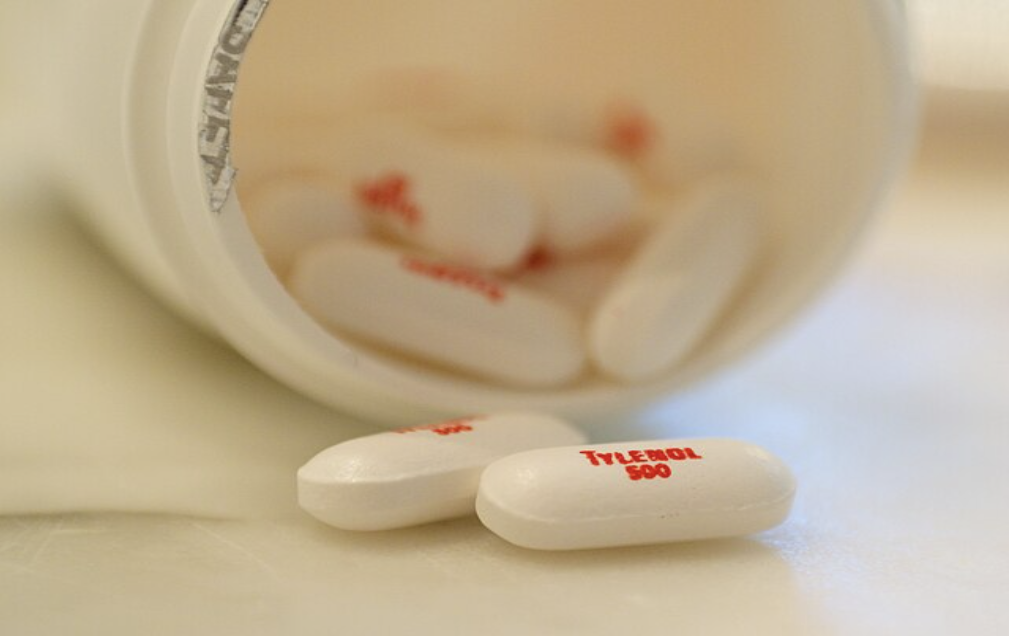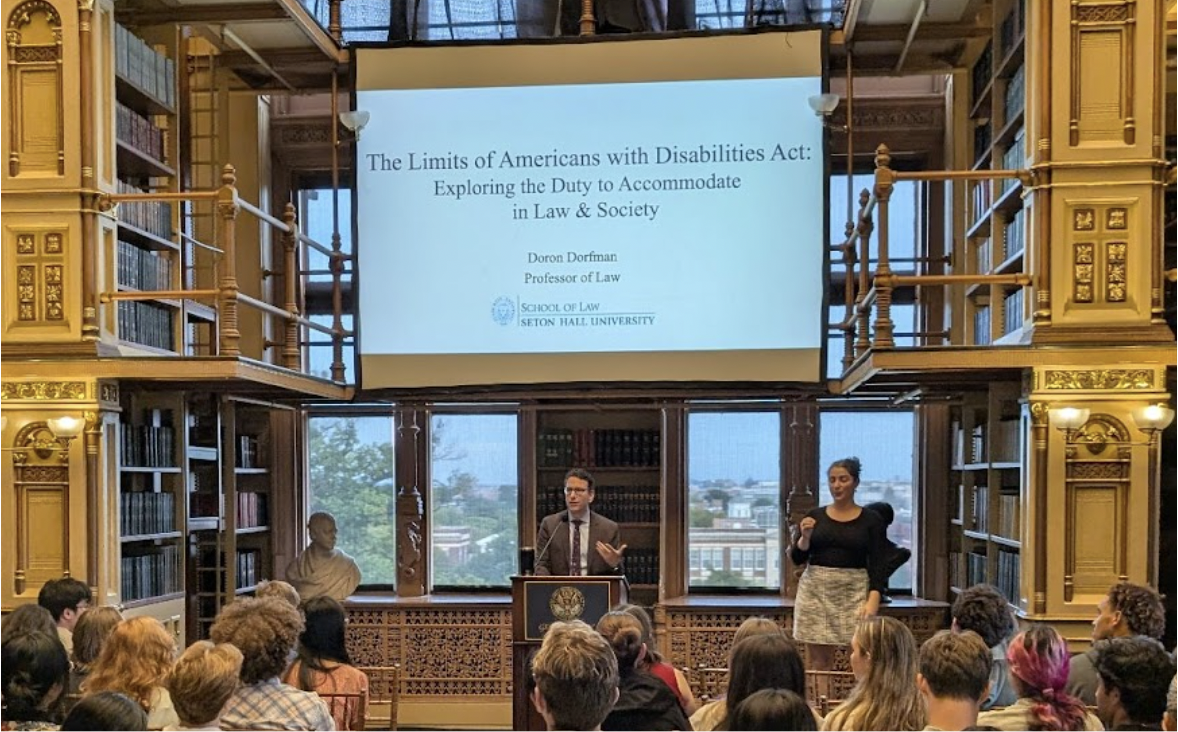A postdoctoral researcher in the department of physics and biology at Princeton University gave a guest lecture about a process that allows algae to generate energy more efficiently Jan. 23.
Inside cells, small compartments called organelles keep things organized. Many organelles are bound by membranes like bubbles filled with specific tools for particular cellular tasks. Biomolecular condensates, however, are an exception. These membraneless organelles form when certain molecules clump together and can be biologically advantageous, according to Trevor GrandPre, who gave the lecture.
The lecture was part of the department of physics colloquium, which brings scholars from other universities to Georgetown University to talk about their research. GrandPre explained how specific biomolecular condensates called pyrenoids allow some organisms — like algae — to conduct photosynthesis, a process that uses carbon dioxide to convert solar light energy to sugars like glucose, more efficiently.
“Pyrenoids are packed with a really high density of carbon dioxide and rubisco, a protein that can take the carbon out of carbon dioxide so it eventually turns into glucose,” GrandPre told The Hoya. “While rubisco by itself is bad at removing carbon dioxide, by forming this pyrenoid, the algae is able to increase the rate of carbon capture and circumvent the inefficiency of rubisco by itself.”
Since most plants lack the ability to form pyrenoids and enhance photosynthetic efficiency, the pyrenoid in algae presents a unique research area that can provide insights about how to increase the rate of photosynthesis.
In the algae GrandPre studies, Chlamydomonas reinhardtii, rubiscos clump together in the pyrenoid by adhering to a flexible protein called EPYC1. In other words, EPYC1 bridges the rubisco molecules together.
“Rubisco has binding domains for EPYC1, and EPYC1 has binding domains for rubisco, so they’ll stick together,” GrandPre said. “What I study is how the properties of that bridge protein affect the rubisco compartment.”
Since rubisco is a rigid spherical molecule, its binding domains are fixed. However, EPYC1 is more flexible, meaning its binding domains and linker regions, or parts of the protein that connect EPYC1 binding domains, are not at fixed lengths. Using computer simulations and theoretical models, GrandPre explored what happens when EPYC1’s linker regions are shortened or elongated.
The result was dramatic: cutting the linkers in half decreased critical concentration, or the minimum concentration of molecules needed for a condensate to form, by tenfold. The shorter linkers created a near-perfect “fit” between rubisco and EPYC1, resulting in a smaller region of condensation. Conversely, GrandPre found that increasing the linker length led to stronger, more robust condensates.
There is a delicate balance in linker length. If the linker is too short, the interactions between molecules become overly rigid, disrupting condensate formation. If it is too long, however, the interactions lose efficiency, making it harder for condensates to form.
“You don’t necessarily want the condensate to be so tightly packed because a lot of other molecules have to be able to diffuse through this compartment,” GrandPre said. “At the same time, if the pyrenoid isn’t dense enough, processes might be less efficient.”
According to GrandPre, evolution appears to have optimized this happy medium to maximize photosynthetic efficiency, ensuring rubisco and its partner proteins can form stable condensates that concentrate carbon dioxide and boost the energy-conversion process.
Cassidy Alspaugh (GRD ’30), a first-year doctoral student in the biology department who attended the seminar, said GrandPre’s research expanded her understanding of photosynthesis in algae.
“I had not known about pyrenoids before hearing about Dr. GrandPre’s work,” Alspaugh said. “I found it incredible that these condensates are responsible for a large chunk of global carbon fixation, highlighting the importance of studying the pyrenoid’s components, EPYC1 and rubisco.”
Aislinn Trejo (CAS ’25), a senior majoring in biology, said GrandPre’s work was connected to her summer research on biomolecular condensates in the context of muscular dystrophy.
“I knew a little bit about the biomolecular condensates coming in, but my knowledge is more from a biological standpoint, so getting to see it from a physics perspective was very interesting,” Trejo said. “This is a topic that doesn’t have a lot of research on it, so this new research is exciting.”
In the future, GrandPre hopes to explore how introducing other molecules like kinases, which can add chemicals called phosphates onto EPYC1, can affect energy-driven, or active, condensate formation.
“In this system, there’s recently been a kinase called KEY1 that will modify EPYC1,” GrandPre said. “This is one thing I definitely want to study: the physics of the active condensate.”




